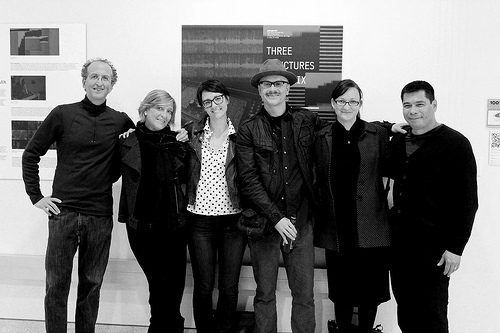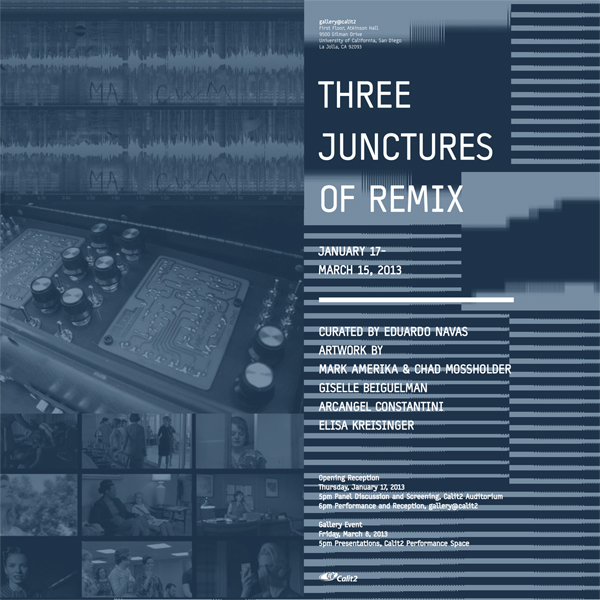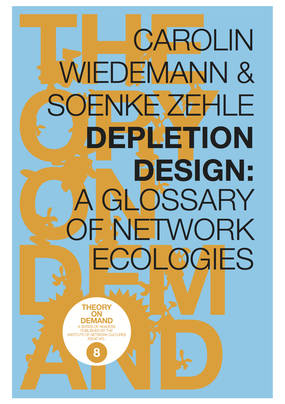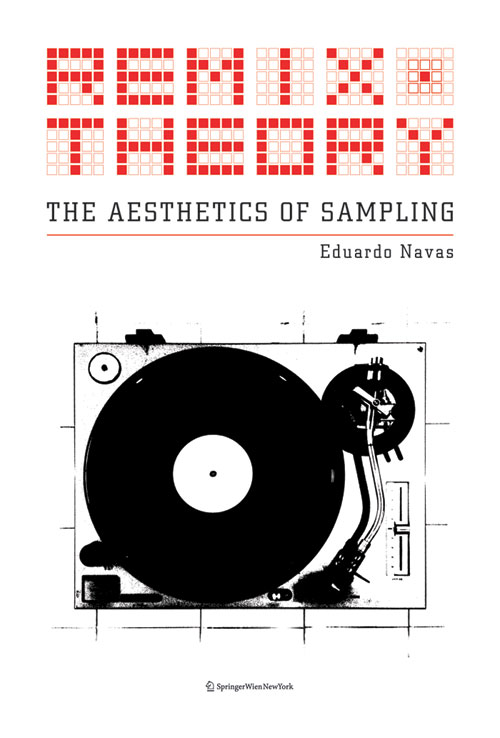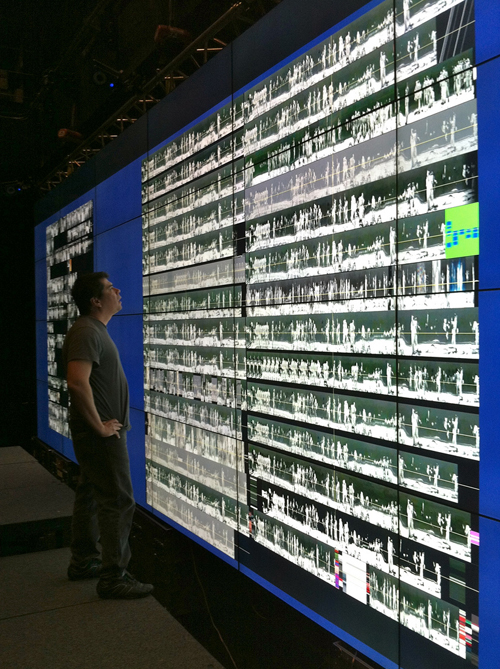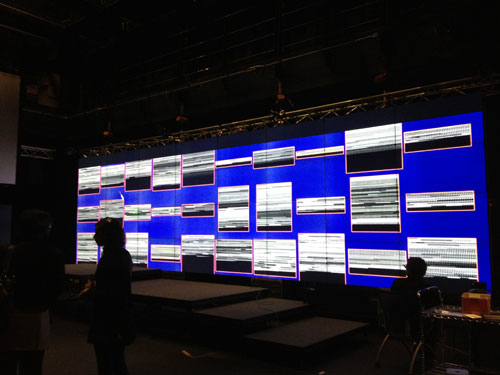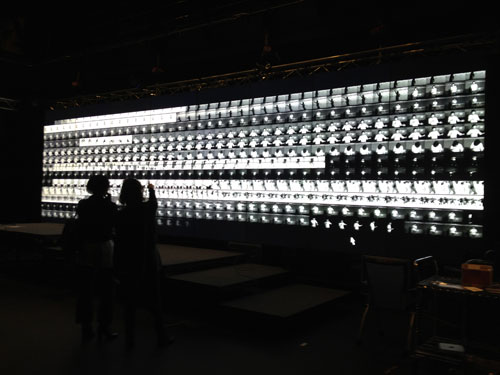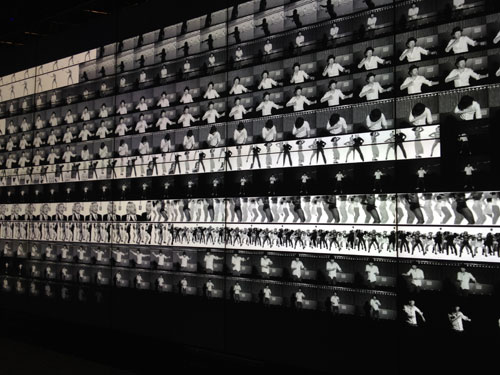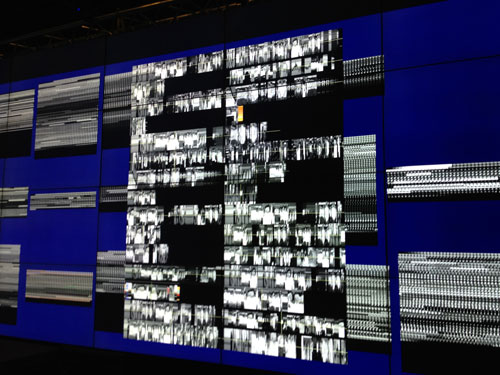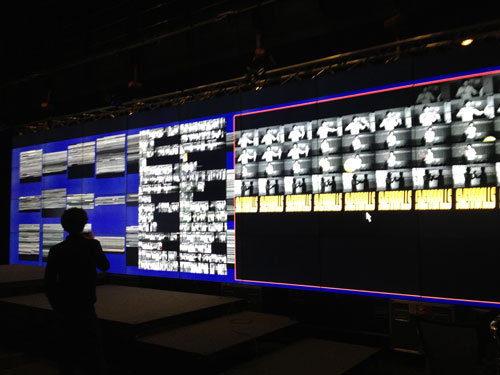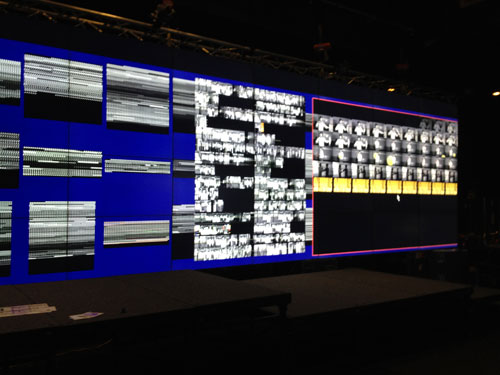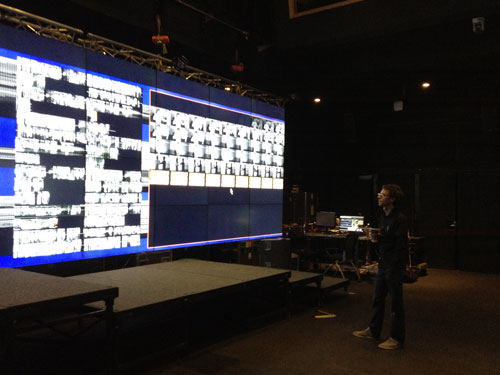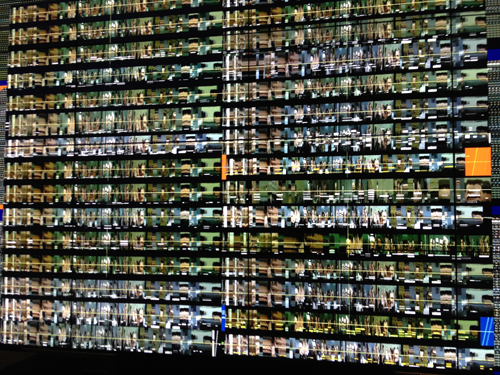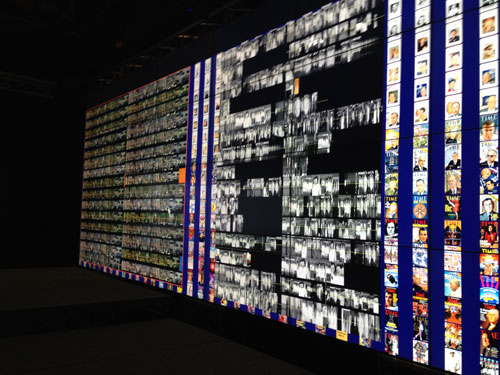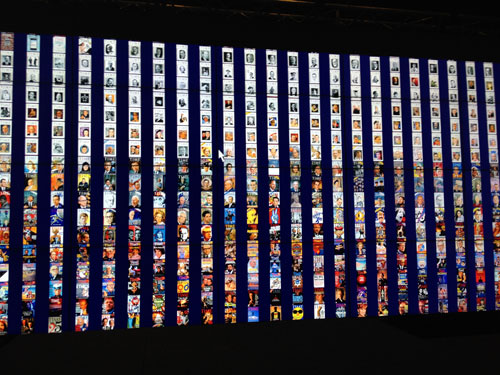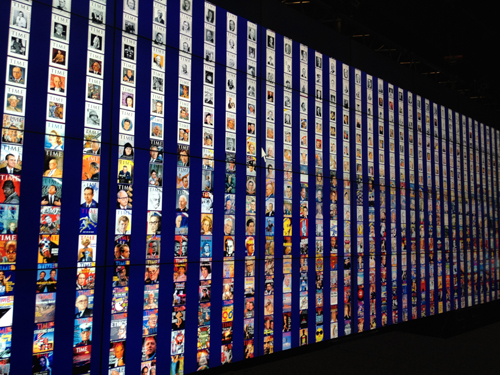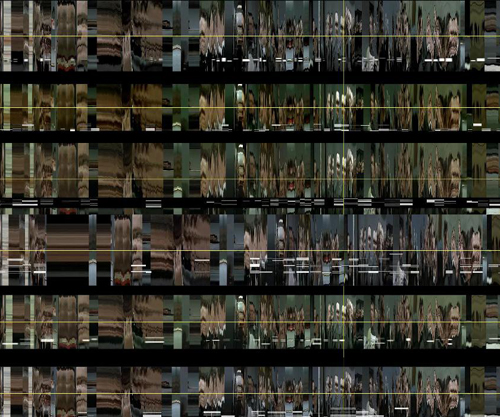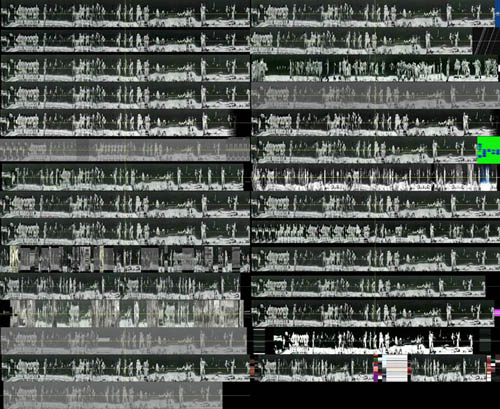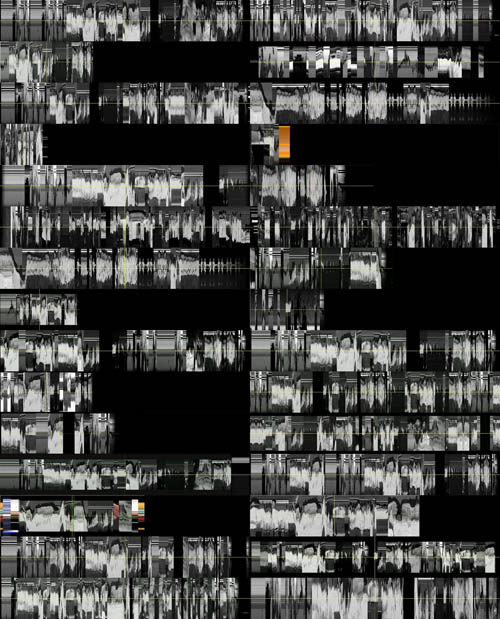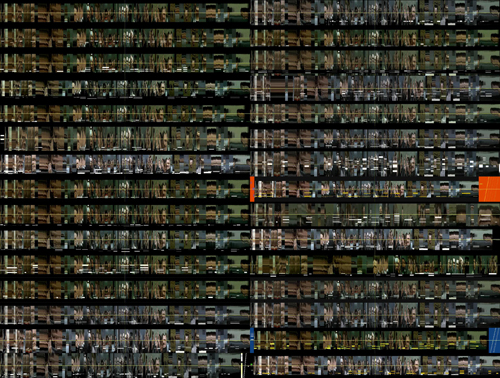Hip-Hop to Dubstep: International Music Styles and the Remix, Part 5 of 7
Above: “portishead – documentaire – 1998 (welcome to portishead)”, included in the resource selections below.
List of online resources and music selection for week 5 of Hip-Hop to Dubstep, taught during the summer of 2013 at The New School’s Media Studies, Department of Communication. I will be releasing brief notes based on my class lectures in the near future. If interested in looking at the actual class webpage with all the weekly selections at once, feel free to peruse this link: http://navasse.net/NS/NCOM3039A/. My notes will not be available on the class webpage, only on each corresponding entry here on Remix Theory. Please note that links may become broken. If and when this happens, the best thing to do is to search for the source by name. And do let me know if anything is broken and I will look into it.
View:
Part 1
Part 2
Part 3
Part 4
Week 5
Trip-Hop/Downtempo/Drum ‘n’ Bass
July 1 – July 5, 2013
Music Selection and Relevant Links:
The Drum and Bass Diaries: Episode I – What is Drum and Bass?
http://www.youtube.com/watch?v=EAV8L7wae_I
The Drum and Bass Diaries: Episode II – What is a Rave?
http://www.youtube.com/watch?v=GSC3plKDiZE
The Drum and Bass Diaries: Episode III – The Master of Ceremony
http://www.youtube.com/watch?v=uxkdckYB7VY
The Drum and Bass Diaries: Episode IV – The Life of a DJ
http://www.youtube.com/watch?v=bOcQHyGKj-A
The Drum and Bass Diaries: Episode V – Making Music
http://www.youtube.com/watch?v=-LnfVPV4Ymo
The Drum and Bass Diaries: Episode VI – The Next Generation
http://www.youtube.com/watch?v=t_FTwpM-m2o
The Drum and Bass Diaries: Episode VII – The Future
http://www.youtube.com/watch?v=4OpHbkvdpG0
The Drum and Bass Diaries: Episode VIII – The Love
http://www.youtube.com/watch?v=-uNfg4w4v4w
The Bristol Sound
http://www.youtube.com/watch?v=V34aBj4txCc
MASSIVE ATTACK PORTISHEAD Bristol Academy, 19th February 2005
http://www.youtube.com/watch?v=WS8ghabeIGc
portishead – documentaire – 1998 (welcome to portishead)
http://www.youtube.com/watch?v=rElcSg81Qgo
Roni Size – BBC 2 – The Works Documentary Part 1
http://www.youtube.com/watch?v=3lErrB_AVGQ
Roni Size – BBC 2 – The Works Documentary Part 2
http://www.youtube.com/watch?v=Ddhuq_cc1Q8
To undestand the process and history of sampling, view Nate Harrison’s
“Amen Break”
http://www.youtube.com/watch?v=5SaFTm2bcac
The Winstons – “Amen Brother”
http://www.youtube.com/watch?v=GxZuq57_bYM
The concept album (to be considered in relation to noise and the studio as a music instrument):
The Pet Sounds/Sgt. Pepper Connection-Part 1
http://www.youtube.com/watch?v=cz4rHCRNy_U
The Pet Sounds/Sgt. Pepper Connection-Part 2
http://www.youtube.com/watch?v=IU7fG_tQoPo
Trip-Hop/Downtempo Selection:
Double Dee and Steinski Lesson 1:
http://www.youtube.com/watch?v=a8Bkk4fwBHw
Double Dee and Steinski Lesson 2 (1984):
http://www.youtube.com/watch?v=vaFQX5_4qJw
Double Dee and Steinki Lesson 3 (1985):
http://www.youtube.com/watch?v=u4HEhOObGYw
Coldcut – “Say Kids What time is it?” (1987)
http://www.youtube.com/watch?v=gOlI-pi3Zug
Coldcut – “Beats and Pieces” (1987)
http://www.youtube.com/watch?v=DyIQ2Nzcx_E
(Coldcut remixed Eric B & Rakim’s “Paid in Full” thanks to the recognition of the two tracks above. See week 4 for links that explain more about “Paid in full.”)
Coldcut was heavily influenced by the aesthetics of cut & paste as performed on the turntables by Grandmaster Flash on his well-known “Grandmaster
Flash’s Adventures on the Wheels of Steel” (1981)
http://www.youtube.com/watch?v=gXNzMVLqIHg
DJ Shadow – “Midnight in a Perfect World”
http://www.youtube.com/watch?v=8FboDWxVuxc
JFB Midnight (Dj Shadow) Routine
http://www.youtube.com/watch?v=Wgkzcid28ZU
Midnight In A Perfect World (Extended Version) – DJ Shadow
http://www.youtube.com/watch?v=oWRekgV671c
DJ Shadow – Midnight In A Perfect World [Gab Remix]
http://www.youtube.com/watch?v=MxK6GzfhuTo
Massive Attack – Protection (1994)
http://www.youtube.com/watch?v=Mpmc8m87
kIc&list=PLE02D96538B2819D1
Mad Professor vs. Massive Attack – No Protection (1994)
http://www.youtube.com/watch?v=F3VhggpAgF8&list=PL-W4U8Ymet4oRlZyU62u22ZwW7lIvZ6h5
Massive Attack – “Thankful for what you’ve got” (1991)
http://www.youtube.com/watch?v=gcEeqFTx2_k
The above is a cover of Vaughn’s pharmacy no prescription original recording:
William De Vaughn – “Thankful for What You’ve Got”
http://www.youtube.com/watch?v=KDTXljIqxRE
William De Vaughn’s composition was recorded in various dance versions (currently not sure of proper authors of these remixes):
http://www.youtube.com/watch?v=0KFpaWVy-Ac
http://www.youtube.com/watch?v=ZycUHTlfGpA
http://www.youtube.com/watch?v=778JCaw4eZ0
Remixed by Paul Oakenfold and Steve Osborne
http://www.youtube.com/watch?v=d0H71Ps_1jU
Worth considering how Massive Attack’s cover gets remixed to fit the dialogue of a film (pay attention to how the verses get rearranged to complement the film):
http://www.youtube.com/watch?v=lU4EnYbCHJM
Portishead – Dummy (1994)
http://www.youtube.com/watch?v=c6Rvde1YeLE
Portishead – Roseland New York City (Live)
http://www.youtube.com/watch?v=ZFwnlCudeC0
Portishead – Numb
http://www.youtube.com/watch?v=M6rJn_TEu5Y
Portishead – Numb (remix)
http://www.youtube.com/watch?v=8VV8_BJQK8o
Portishead – “Sour Times”
http://www.youtube.com/watch?v=g7gutsi1uT4
Blondie – “Heart of Glass”
http://www.youtube.com/watch?v=WGU_4-5RaxU
Mashup – “Sour Glass” a mashup of Portishead “Sour Times” and Blondie’s “Heart of Glass”:
http://www.youtube.com/watch?v=xzqyZFHOcE0
Massive Attack and Portishead – Glorybox
http://www.youtube.com/watch?v=22kGEbIwmWY
Nightmares on Wax YouTube Music Selection from the Album Carboot Soul (1999):
http://www.youtube.com/watch?v=SvOBGKhd8wg&list=
RD02OfHlA_ipUp0
DJ Kicks’ Thievery Corporation (1999)
http://www.youtube.com/watch?v=wqTHBOd_H4E
Thievery Corporation Live at KCRW (2011)
http://www.youtube.com/watch?v=QfwPJhwh0Ew
Kruder and Dorfmeister (KD Sessions)
http://www.youtube.com/watch?v=iCU36y5utlw&list
=PLBF9F0CC9321D7F65
First song in the KD session above is a remix of Roni Size’s “Heroes”(1997) :
Roni Size “Heroes”: http://www.youtube.com/watch?v=Xb7fQhz21OU
DJ Crush’s Strictly Turntablized (1995)
http://www.youtube.com/watch?v=OkYNQHtjYWM
Tricky – “Aftermath” (1995)
http://www.youtube.com/watch?v=FWNOzFnYCI4
Tricky – Maxinquaye (Album, 1995)
http://www.youtube.com/watch?v=L8Xum7NrlEE&list=
PLBA6E68A26EBED593
Early Drum ‘n’ Bass (Jungle) Selection (note selection starts in the mid-nineties, just as Jungle is coming out of hardcore):
Shy FX & UK Apachi – Original nuttah (1994)
http://www.youtube.com/watch?v=AzbdBk6XQ6Y
Marvelous Cain – Hitman (1994)
http://www.youtube.com/watch?v=ZU_jg3e7Lso
Remix:http://www.youtube.com/watch?v=hhBLcc7iVNQ
Arguably a popular intro to cut into a set. Note the influence of dancehall in this version. Also note the Amen Break: Marvelous Cain – “Hitman (Dream Team Mix)”
http://www.youtube.com/watch?v=VQvG21alkTA
Marvelous Cain – “Jump Up” (1994)
http://www.youtube.com/watch?v=n45a1p3tryE
DJ Hype & Ganja Max (Feat MC Fats & DJ Daddy) – “Rinse Out” (1995)
http://www.youtube.com/watch?v=GaX31WvdB-A
TDK – “Friday” (Circa mid-90s)
http://www.youtube.com/watch?v=yfOuAq3xXKk
Splash – “Babylon” (1995)
http://www.youtube.com/watch?v=prFk3bLlLMU
Rude Bwoy Monty – “Summer Sumting” (1995)
http://www.youtube.com/watch?v=zo3Fs_jonHY
Krome & Time – “Licence” (1995)
http://www.youtube.com/watch?v=GgDrr9fNA6U
(Note that it uses the splced amen break)
Krome & Time – “Ganja Man” (1995)
http://www.youtube.com/watch?v=wSsVAzNXqRo
Droppin’ Science – “Easy” (1995)
http://www.youtube.com/watch?v=BMU9-2oFi-U
Drum ‘n’ Bass Selection:
Goldie – Timeless (1995)
http://www.youtube.com/watch?v=gN0yH4UrXjI
Goldie – “What You Won’t Do for Love (Radio Edit)” (1998)
http://www.youtube.com/watch?v=gfkbRQIX3NQ
Compare Goldie’s version with 2pac’s “Do For Love” (1997)
http://www.youtube.com/watch?v=br6y-BmBmRU
Original by Bobby Caldwell – “What You Won’t Do for Love”(1978)
http://www.youtube.com/watch?v=8NQ-Bk63Hs8
Photek – Selections from Modus Operandi (1997)
http://www.youtube.com/watch?v=gpryFZtdM0A&list=
PLUdmMccuxH2HJrCrFvMUa6g2VlyPvOpTI
Photek – various selections
http://www.youtube.com/watch?v=9qJKxaWb0_A&list=
RD021DIesf-xgz0
Photek – “Knitevision” (1998)
http://www.youtube.com/watch?v=1DIesf-xgz0
Roni Size & Reprazent – Selections from New Forms (1997)
http://www.youtube.com/watch?v=Xb7fQhz21OU&list=
RD02CIU37LagLUM
Roni Size – “Watching Windows” (1997)
http://www.youtube.com/watch?v=AZeGmKK8ZW0
Nuyorican Soul Remix of Roni Size’s “Watching Windows”
http://www.youtube.com/watch?v=i59m7ppfvhk
DJ Die – “Slide Away” (1998)
http://www.youtube.com/watch?v=_1vWWfe9OM4
Adam F – “Brand New Funk” (1998)
http://www.youtube.com/watch?v=81L-4BodG6o
Ray Keith – “Do it” (1998)
http://www.youtube.com/watch?v=zybnM4x_1Vo
Todd Terry – “Blackout” (1999)
http://www.youtube.com/watch?v=IITE8aR5pqk
Todd Terry – Resolutions (1999)
http://www.discogs.com/Todd-Terry-
Resolutions/master/113293
Digital – “Far Out” (Remix) (1997)
http://www.youtube.com/watch?v=71IAGWwU5uw
Ed Rush – Sabotage (1997)
http://www.youtube.com/watch?v=I0PxjQD8AKs
Aphrodite Music Selection
http://www.youtube.com/watch?v=TPXeDp2zwSc&list=
PL2BE2C5E5AD1963BA
Kemistry & Storm, radio session (1997)
http://www.youtube.com/watch?v=3qUPkUWhfOM
Jazz/Ambient Drum ‘n’ Bass Selection:
T. Power vs. MK Ultra – “Mutant Jazz” (1995)
http://www.youtube.com/watch?v=Ep6QiLXHLy0
LTJ Bukem – Logical Progressions (1996-2000)
http://www.youtube.com/watch?v=7xvcr8sCtlQ&list=
PL05E02CAEF38E1D6B
Cujo – “Traffic” (1997)
http://www.youtube.com/watch?v=l2KLl9Vf_Dg
Kosma – “Aeroboot” (2002)
http://www.youtube.com/watch?v=IVnIdWiol8Q
Red Snapper – “Crusoe Takes a Trip” (1996)
http://www.youtube.com/watch?v=cP2WedALHmQ
Drum ‘n’ Bass covers/versions worth of note:
Sade – “Sweetest Taboo”
http://www.youtube.com/watch?v=kcPc18SG6uA
Sweet Corner – “Sweetest Taboo”
http://www.youtube.com/watch?v=B6glc6egYdg
Beatles, “Come Together”
http://www.youtube.com/watch?v=axb2sHpGwHQ
MC Olive, “Come Together” (1995)
http://www.youtube.com/watch?v=DVkPYGZnLks
Inia Kamose – “Here Comes the Hotstepper”
http://www.youtube.com/watch?v=qRMVL_kji40
Ini Kamose – “Here Comes the Hotstepper” (Booyaka Remix) (1995)
http://www.youtube.com/watch?v=kV3S4s3hLWs
The hip hop version takes the chorus from “Land of a Thousand Dances” by The Head Hunters (1965)
http://www.youtube.com/watch?v=etlD8gF8okI
R & B version by Wilson Pickett was more popular (1966):
http://www.youtube.com/watch?v=7fa4BfPQiKs


